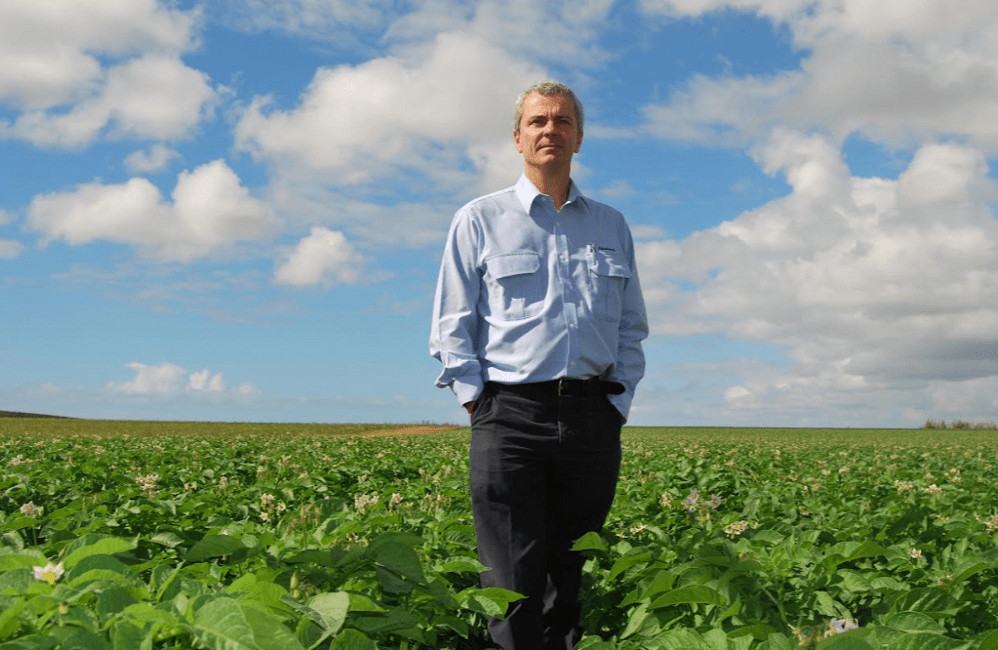
Rabobank Australia CEO Peter Knoblanche.
OPTIMISM is growing among Australian farmers, but a third of those surveyed in the latest quarterly Rabobank Rural Confidence Survey still expected economic conditions to worsen with the impacts of excess rain and flooding.
The survey showed more farmers are buoyed by expectations of a good season with the highest level of seasonally-driven optimism seen in 2022.
Of those surveyed, 57 percent of farmers had expectations of an improved year ahead, up from 35pc in the previous quarter.
Concerns about biosecurity have also lessened, with just 1pc of those surveyed who expected the agricultural economy to worsen noting the threat of Foot and Mouth Disease (FMD) as a concern – down from 39pc in the previous results.
But 32pc of farmers surveyed expected the agricultural economy to worsen, citing too much rain as a key reason, driven by a third La Nina which delivered flooding, damaging storms and record rainfall.
The survey found sentiment was edging back up after four consecutive quarters of decline, with fewer farmers now expecting agricultural business conditions to worsen on the back of a wet spring and easing concerns about commodity prices and biosecurity.
The farmers said challenges around high input costs, excessive rainfall and biosecurity concerns had taken the edge off otherwise generally very positive seasonal conditions and commodity prices.
Rabobank Australia chief executive officer Peter Knoblanche said the latest survey reflects an enduring confidence in agriculture, despite the mixed bag of challenges Australian farmers continue to face.
“Domestic and global demand for our rural commodities underpins productivity and profitability across sectors, and, with three years of improved seasonal conditions now under our belts, farmers have the confidence to make long-term investments into their businesses.
“That said, we’re still seeing the seasonal resilience of farming businesses being tested – many have weathered droughts and bushfires to then face extreme wet conditions, which create challenges of a different nature,” he said.
“This has reined in the earlier seasonal optimism for some, while for others La Nina will deliver a record grain harvest and set up their feed base and soil moisture reserves for the New Year.
“It certainly hasn’t been a one-size-fits-all this year, which is driving the varied responses of farmers across states and sectors,” Mr Knoblanche said.
The survey was completed last month and found 15pc of farmers were expecting improved business conditions in the coming 12 months (compared with 14pc last quarter), while 50pc had a stable outlook (up from 43pc). A total of 31pc expected operating conditions to deteriorate, down on the 36pc with that view previously.
In addition to optimism about good seasonal conditions, positive sentiment is being primarily driven by commodity prices – though this was down on last quarter, nominated by 56pc of those expecting business conditions to improve, compared with 73pc in the previous survey).
The high cost of farm inputs – such as fuel, fertiliser and energy – remains a concern for nearly half of farmers (49pc) who expect the agricultural economy to worsen; however, this has dropped from the 62pc who had that concern in the middle of the year.
The survey found concern around government interventions and policies appears to be rising, with 17pc of farmers who expect the economy to worsen noting this as a factor – up from 11pc previously.
The surveyed farmers though were less worried about softening markets/commodity prices, with 21pc citing this as cause for their negative outlook, compared with 40pc in the previous survey.
Mr Knoblanche said inflation was not found to be significantly weighing on rural confidence, with only 3pc of farmers listing it as cause for their pessimistic outlook. Interest rates were reported as a concern by 11pc of farmers expecting deteriorating business conditions in the year ahead, down from 15pc with that concern in the previous survey, despite recent interest rate hikes.

HAVE YOUR SAY